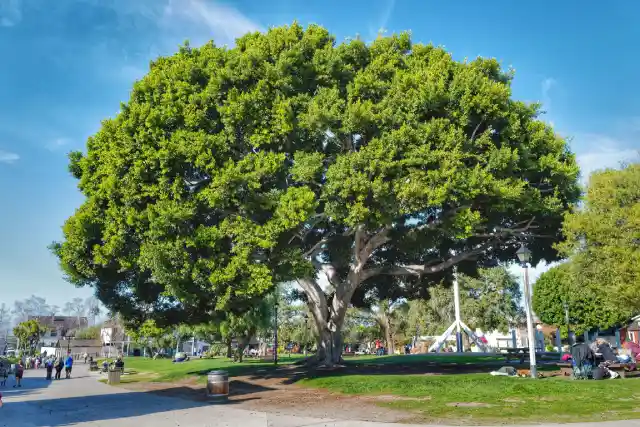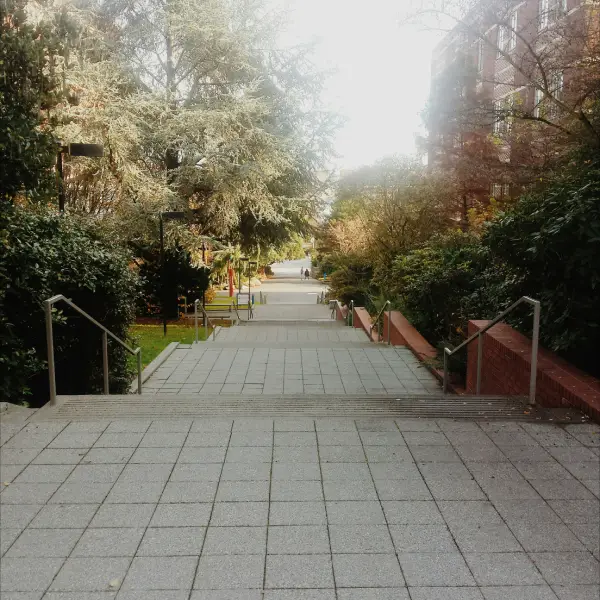Commercial Tree Service: What It Is, Why It Matters, and How to Get It Right
A commercial tree service maintains trees on business properties, apartment complexes, shopping centers, office parks, schools, and HOA communities. Tree service companies (like Diamond Tree Experts) also serve residential customers, but commercial tree service focuses on commmercial properties. Properties where liability matters because people walk past trees every day, park under them, or work around them.
Diamond Tree Experts has provided commercial tree service across Salt Lake County for 57+ years. We know what goes wrong when commercial properties skip regular tree maintenance. Liability claims from falling branches. City fines for power line violations. Insurance problems when trees damage property.
Commercial tree care prevents expensive problems through scheduled maintenance rather than crisis response. Property managers who understand this save money long-term.
What Commercial Tree Service Actually Includes
Regular tree trimming and pruning keeps branches from hitting people, cars, or buildings. We trim trees around parking lots every 2-3 years depending on species and growth rates. Fast-growing species like cottonwoods need annual attention.
Tree removal becomes necessary when trees die, develop structural problems, or create safety hazards. Commercial tree removal often requires specialized equipment because of limited access and nearby obstacles.
Power line tree trimming clearance prevents electrical hazards and fire risks. Utility companies require specific clearance distances that vary by voltage. We maintain certifications for power line work that most tree companies don’t have.
Emergency storm cleanup addresses immediate hazards after wind or snow damage. Commercial properties can’t wait days for cleanup because of liability and access issues.
Stump grinding eliminates trip hazards and pest problems. Commercial stumps need grinding below ground level for mowing equipment clearance.
Plant health assessments identify disease and pest problems before they spread. Early treatment costs less than tree replacement and prevents problems from affecting multiple trees.
Get your free ESTIMATE
Give Us a Call: (801) 262-1596
Utah-Specific Commercial Challenges We Handle
Salt Lake County’s alkaline soil creates iron chlorosis in 60% of commercial landscape trees. Yellow leaves with green veins indicate this problem. We’ve developed soil treatment programs specifically for Utah’s soil conditions.
Winter snow loads break branches and damage trees throughout the Wasatch Front. Commercial properties need post-storm assessments to identify hazards before people return to work.
Drought conditions stress trees and make them susceptible to pest problems. We adjust watering recommendations for commercial irrigation systems based on tree species and soil conditions.
Elevation differences across Salt Lake County affect pest timing and tree care schedules. What works downtown doesn’t work the same in Millcreek or Park City areas.
Wind exposure varies dramatically across commercial properties. Trees in parking lots face different stress than trees in courtyards. Our maintenance plans account for these microclimates.
Why Property Managers Skip Tree Maintenance
Budget pressures make tree care seem optional until problems develop. Property managers focus on immediate needs like plumbing and HVAC repairs. Trees grow slowly so problems develop gradually.
Most property managers lack tree knowledge. They don’t recognize early signs of problems that certified arborists spot immediately. Dead branches scattered through a canopy indicate serious issues.
Scheduling conflicts prevent regular maintenance. Commercial properties want tree work done when tenants and customers aren’t around. This limits available work windows.
Multiple decision makers slow approval processes. Property managers need owner approval for tree work. Delays allow problems to worsen and become more expensive.
Insurance confusion creates hesitation about tree work liability. Property managers worry about liability if something goes wrong during tree removal or trimming.

When Commercial Tree Problems Become Expensive
Falling branches create liability claims that cost thousands in legal fees and settlements. We’ve seen shopping center claims over $50,000 from single branch failures that regular pruning would have prevented.
Root damage to parking lots and sidewalks requires expensive concrete repair. Tree roots follow water and nutrients which often concentrate along pavement edges. Root barriers during planting prevent most problems.
Power line contact causes outages and fire risks. Utility companies charge property owners for service calls when trees contact lines. These charges range from $500-2000 per incident.
City code violations result in fines and forced compliance. Most cities require power line clearance and hazard tree removal within specific timeframes. Violations carry daily fines until corrected.
Storm damage becomes more severe when trees haven’t received proper maintenance. Weak branch attachments and poor structure fail during wind events that healthy trees survive.
Commercial Equipment Requirements
Bucket trucks access high branches safely around buildings and parking areas. Standard bucket trucks reach 60-75 feet. We use specialized equipment for taller trees or restricted access areas.
Cranes handle large tree removals near structures. Crane work requires certified operators and traffic control plans. Most commercial tree removals need cranes due to space limitations.
Stump grinders remove stumps below grade for commercial mowing requirements. Commercial properties need stumps ground 4-6 inches below surface rather than residential 2-3 inches.
Chippers process branches into mulch on-site. Large commercial jobs generate significant debris volume. On-site processing reduces hauling costs and provides mulch for landscaping.
Traffic control equipment keeps workers and pedestrians safe. Commercial tree work often requires road closures, cone placement, and flagging personnel.

Scheduling Commercial Tree Work
Late winter works best for most tree species before spring growth starts. But commercial properties have scheduling constraints that affect timing recommendations.
Office complexes prefer weekend work to avoid disrupting business operations. We schedule major removals and pruning during low-activity periods.
Retail properties need flexible scheduling around busy shopping periods. Holiday seasons and back-to-school periods limit available work windows.
Schools require summer scheduling when students and staff are absent. Emergency work during school sessions needs special coordination with administrators.
Apartment complexes can accommodate weekday work but need resident notification. We post notices 72 hours before major tree work begins.
Safety Protocols for Commercial Work
OSHA regulations apply to all commercial tree work. Fall protection, traffic control, and equipment safety requirements exceed residential standards. We maintain OSHA training for all crew members.
Traffic control plans protect workers and pedestrians during tree work near roads and parking areas. Proper signage and cone placement prevent accidents and liability.
Utility location services identify underground lines before any digging or stump removal. Commercial properties have complex underground utilities that require professional location services.
Insurance requirements for commercial work exceed residential coverage. We carry higher liability limits and workers compensation coverage specifically for commercial projects.
Common Commercial Tree Care Mistakes
Using the cheapest contractor usually creates more problems than it solves. Poor pruning practices damage trees and create future hazards. Uninsured contractors create liability for property owners.
Delaying maintenance until trees become hazardous costs more than preventive care. Emergency removals during business hours cost 2-3 times standard rates.
Ignoring power line clearance creates fire risks and code violations. Property owners are responsible for vegetation management around power lines regardless of who planted the trees.
Improper stump removal leaves hazards and prevents future planting. Shallow grinding creates trip hazards and interferes with mowing equipment.
Failing to document tree work creates problems for insurance claims and liability defense. Professional tree services provide detailed records of work performed and tree conditions.
Working with Professional Commercial Tree Services
Certified arborists understand tree biology and proper care techniques. ISA certification requires ongoing education and testing. Diamond Tree Experts maintains multiple certified arborists on staff.
Written maintenance plans help property managers budget and schedule tree care. We develop annual and multi-year plans based on tree species, age, and property requirements.
Emergency response capabilities matter for commercial properties. We provide 24-hour emergency service for storm damage and hazardous tree situations.
Insurance and licensing verification protects property owners from liability. Request certificates directly from insurance companies rather than relying on contractor claims.
References from similar commercial properties demonstrate experience with your type of property and tree care challenges.
Cost Considerations for Commercial Tree Care
Preventive maintenance costs less than reactive emergency services. Regular pruning every 2-3 years costs less than emergency removal after trees fail.
Volume discounts apply to properties with multiple trees or multiple buildings. Efficient scheduling reduces mobilization costs and labor time.
Seasonal pricing variations affect commercial tree care costs. Winter work costs less due to lower demand and better working conditions for equipment.
Emergency rates apply to urgent work outside normal business hours. Storm damage and hazardous tree situations command premium pricing.
Long-term Commercial Tree Management
Species selection affects long-term maintenance costs. Some trees require annual attention while others need pruning every 5-7 years. We help property owners choose appropriate species for their maintenance budgets.
Replacement planning prevents landscape gaps when trees reach end of useful life. Large mature trees don’t live forever and eventual replacement should be planned and budgeted.
Soil improvement programs reduce tree stress and extend tree life. Proper soil management prevents many disease and pest problems that affect commercial landscapes.
Diamond Tree Experts Commercial Experience
We’ve maintained trees for major Salt Lake County commercial properties for over five decades. Shopping centers, office parks, apartment complexes, schools, and government facilities.
Our commercial crews use specialized equipment appropriate for each job. Bucket trucks, cranes, and grinding equipment sized for commercial requirements rather than residential tools.
We understand commercial scheduling needs and liability concerns. Our insurance coverage and safety protocols meet commercial property requirements.
Emergency response capabilities include 24-hour availability for storm damage and hazardous tree situations. Commercial properties can’t wait for normal business hours when safety hazards exist.
Contact Diamond Tree Experts for professional commercial tree service throughout Salt Lake County. Our experience with commercial properties and Utah growing conditions produces reliable results that protect your investment and reduce liability risks.













